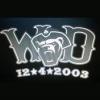Frustrating driving range session
-
Who's Online 89 Members, 0 Anonymous, 443 Guests (See full list)
- kovek
- Skrizan
- IceIce
- Big Daddy E
- Todd Branham
- JAYER38
- hriehl1
- leftyrockets
- TJ Hall
- HVACCody
- dpv34482
- Robert405
- scott_jamo
- Au_funk93
- Feeanch
- Flanpro
- ParFore74x
- sman3115
- Fairway
- Stephen355
- KCC1894
- MattWillGolf
- TMG_Golf
- EasyPutter
- TuukkaH
- kmorforsure
- GolfSpy_APH
- dandad
- Mark Brazell
- THE GOLF GUY
- MarkDeW
- dwade100
- MajorCavalry
- Josh Parker
- bama no 1
- 808JTT808
- brians
- Carter Ennis
- MrMashie
- Michael.Sandoval33
- Billy-Bo-Jim-Bob
- MJGuzik
- MattA72
- Joesanerd
- toodles_of_tol
- Kevin Smith
- Grip
- Fongle
- bsimpfen
- BinoTVCC
- Jveej
- TaylormadeHunter1
- Big moose
- Epe11
- arodrig29
- Norman K
- CB22
- yellowboy
- edkrisiak
- Woodrow72
- Shep28209
- GolfSpy AFG
- jazz15c
- jordan1016
- Doseph
- DrRob1963
- Jean D
- MartinH
- TimT
- JohnWallis
- Ronald Cain
- MaxFr
- MrSleepyhead
- FGP MusicCity
- chrisalm1234
- cornwall44
- don2
- Bob S.
- Dylann_Chapman
- MattYeast
- BLD7
- Jwc5149
- sennysideup
- JaviBrisco
- MissionMan
- Corentin Vadillo
- Northern Monkey
- Calvo90
- ejgaudette


Recommended Posts
Archived
This topic is now archived and is closed to further replies.